Disclosure: Please note that some links are affiliate links, and at no additional cost to you, we earn a commission if you make a purchase.
If you would like to support this website in some way, using these links will help do exactly that.
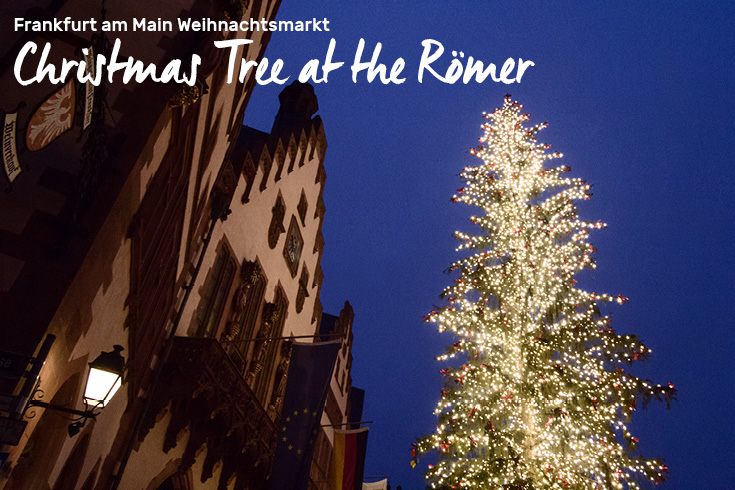
Last year was my first Christmas in Germany, and my first time visiting Christmas markets. I was emotionally surfing between being terrified of the crowds and anxious worrying whether I’d be warm enough to have a good time to bubbling to delirium level of excitement to drink authentic Glühwein and see a new facet of German culture I’d heard so much about. All of our friends and family wanted to take us to a Christmas market, so we ended up seeing four in 2017: Frankfurt am Main, Michelstadt, Nuremberg, and Hanau. I’ll share my favorite photos from each throughout this post.
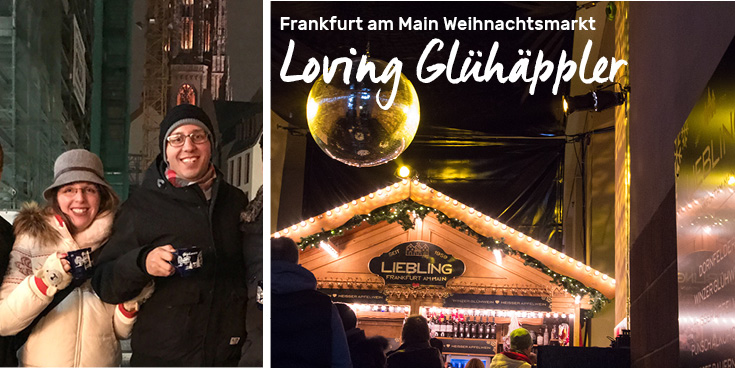
What to Wear to German Christmas Markets
As a Florida girl, I have thin blood to begin with. Anything 60 degrees Fahrenheit and below and I start layering. This is exactly what I ended up doing for the Christmas markets. I tried fleece lining leggings from Modcloth, and I could wear those under my straight legs jeans without anyone being the wiser. I really think they were a huge help to keeping me warm. When I put my thick boot socks on, I’d use the elastic from the sock to go over top the bottom of the leggings layer so no skin around my ankles were exposed. I always wore leather boots with two pairs of socks, a thin pair with the boot socks over those. Sebastian brought over air-activated heated insoles for his shoes. I tried them once, and I felt like they got too hot for my preference, but he loved them and used them throughout the whole Christmas vacation.
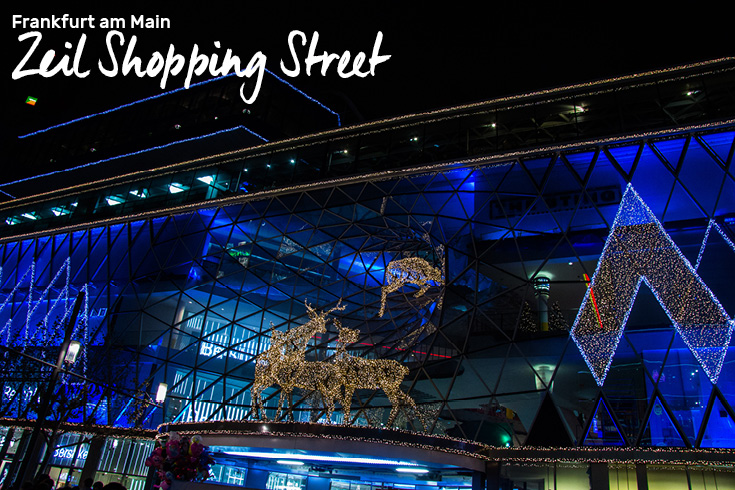
When picking out tops, remember it's unlikely anyone is going to see them! Layer up, and grab anything you have that is thermal. Even though your coat may have a hood on it, look for a winter hat that fits securely on your head. Hoods limit your peripheral vision too much to be practical. Plan on wearing gloves as well, and if you’re planning on taking pictures look for the gloves that are convertible between being fingerless and mittens. All this being said, I was NOT miserably cold. I was able to enjoy myself, and of course the hot Glühwein (pronounced glue-vine) helped!
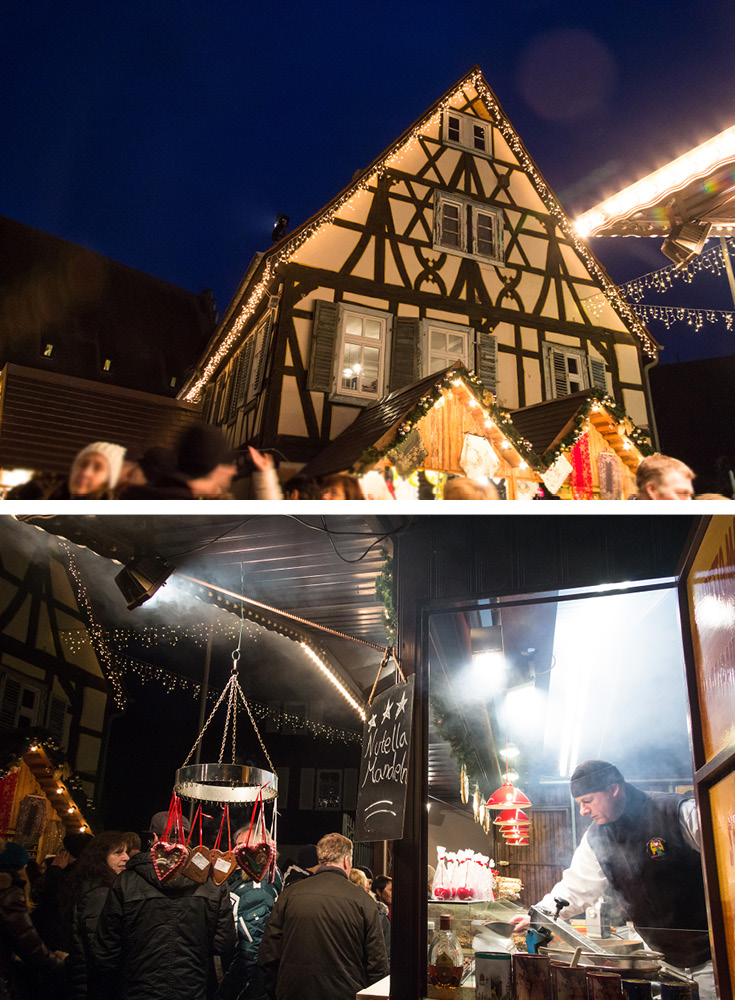
What to Drink at German Christmas Markets
Speaking of Glühwein...this hearty hot, spiced, mulled wine is the starlet beverage of the holiday season. Some Christmas markets, like Nuremberg's, the Glühwein is regulated, and all of the booths offer the same make. If you see a particular stall that has a longer line, don’t be fooled into thinking their Glühwein is better. In Nuremberg they’re all from the same manufacturer. But, other markets like Michelstadt you see the Glühwein is being freshly made in the background out of a slow cooker labeled Glühwein! It depends on the market you’re visiting. In Frankfurt am Main, they offer a hot, holiday version of their Frankfurt Äppler, called Glühäppler. Basically hot cider, which sounds odd at first, but tasted amazing.
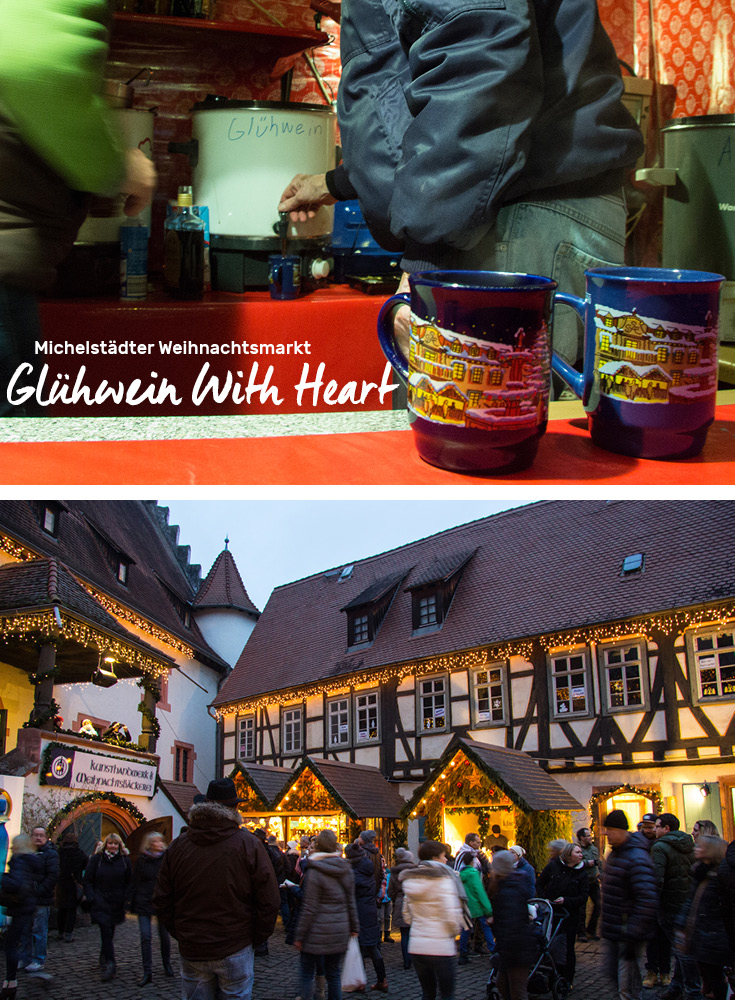
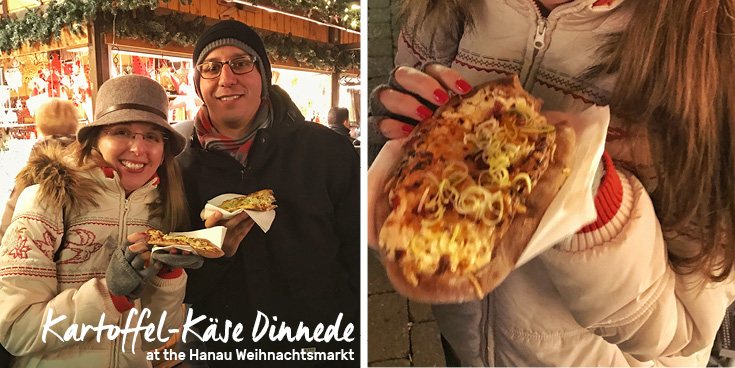
What to Eat at German Christmas Markets
Definitely go to the Christmas Markets hungry! There’s a breadth of choices. Michelstadt really pushes their boar specialities, Hanau we were encouraged to try (and we loved) the Kartoffel-Käse Dinnede. It's a type of flatbread pizza with sour cream, potatoes, and onions grilled. A safe bet is a Frikadellenbrötchen, a German meatball nestled into a sourdough bread roll. It's not messy to eat, and easy on the stomach for a night of drinking Glühwein.
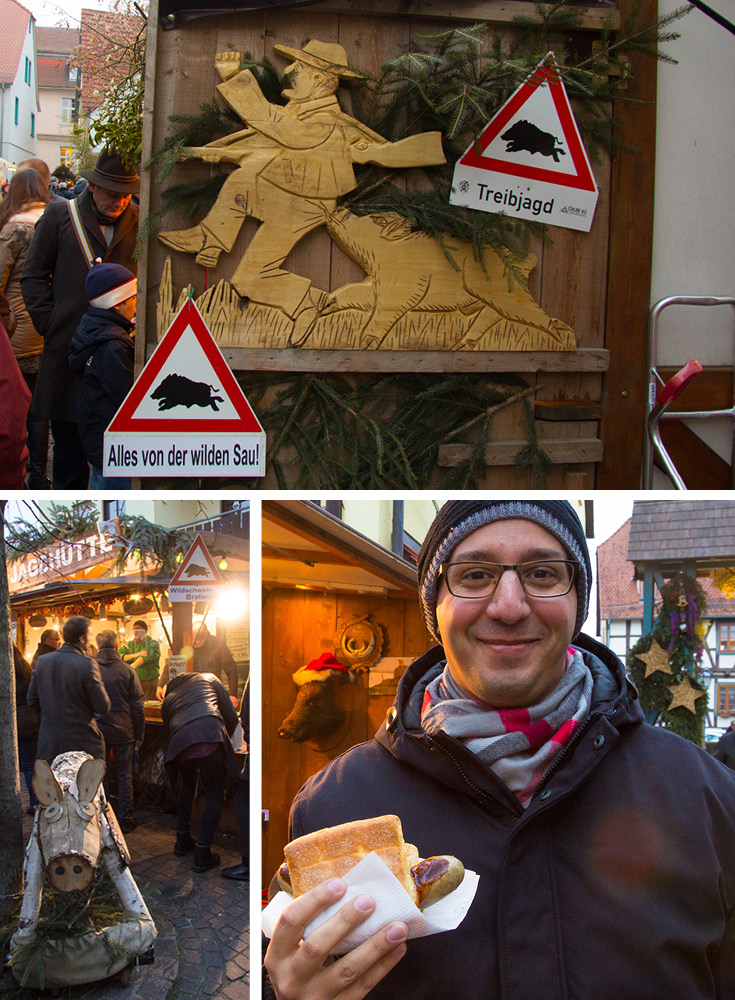
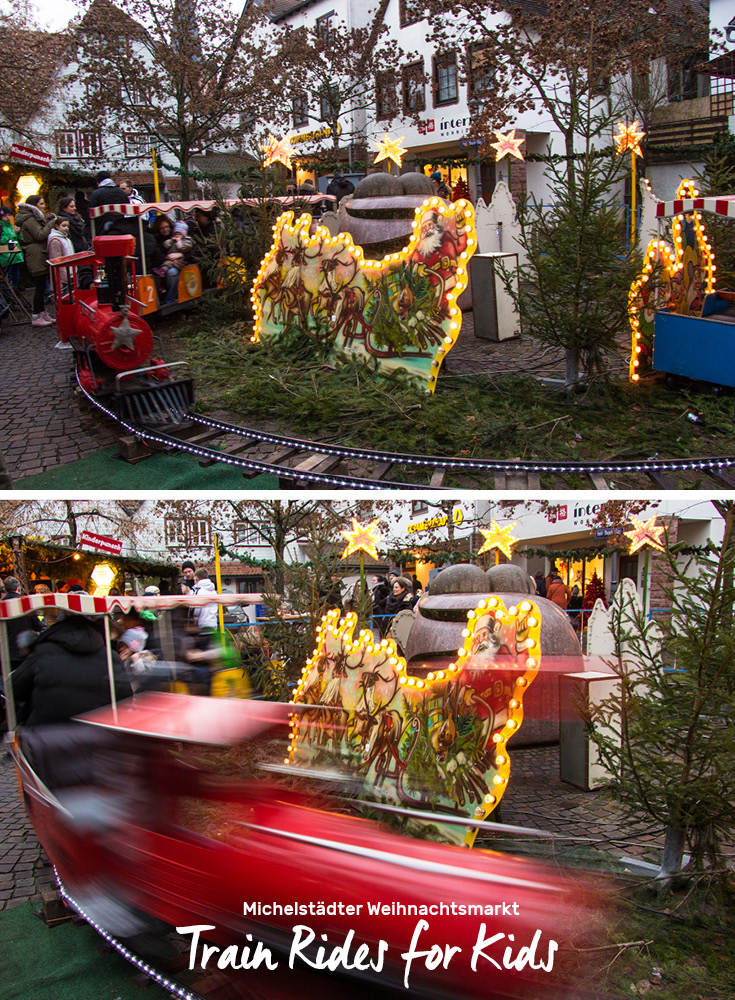
Personal Safety at Christmas Markets
When planning a fun, festive night out at the markets pick a meeting spot within the market in case someone gets separated in the waves of crowds, and pick a meeting spot outside the market in case of an emergency. Sebastian and I were at the Nuremberg Christkindlesmarkt the same night there was an attack at the Berlin Christmas Market. Overnight the security drastically changed in Nuremberg. Where there were open streets the night before, by morning large police vehicles and fire trucks were parked along any open area in order to shield the market area from attackers hoping to use vehicles for mass-harm. Don’t let fear keep you from the markets, but do be safe, smart, and plan ahead!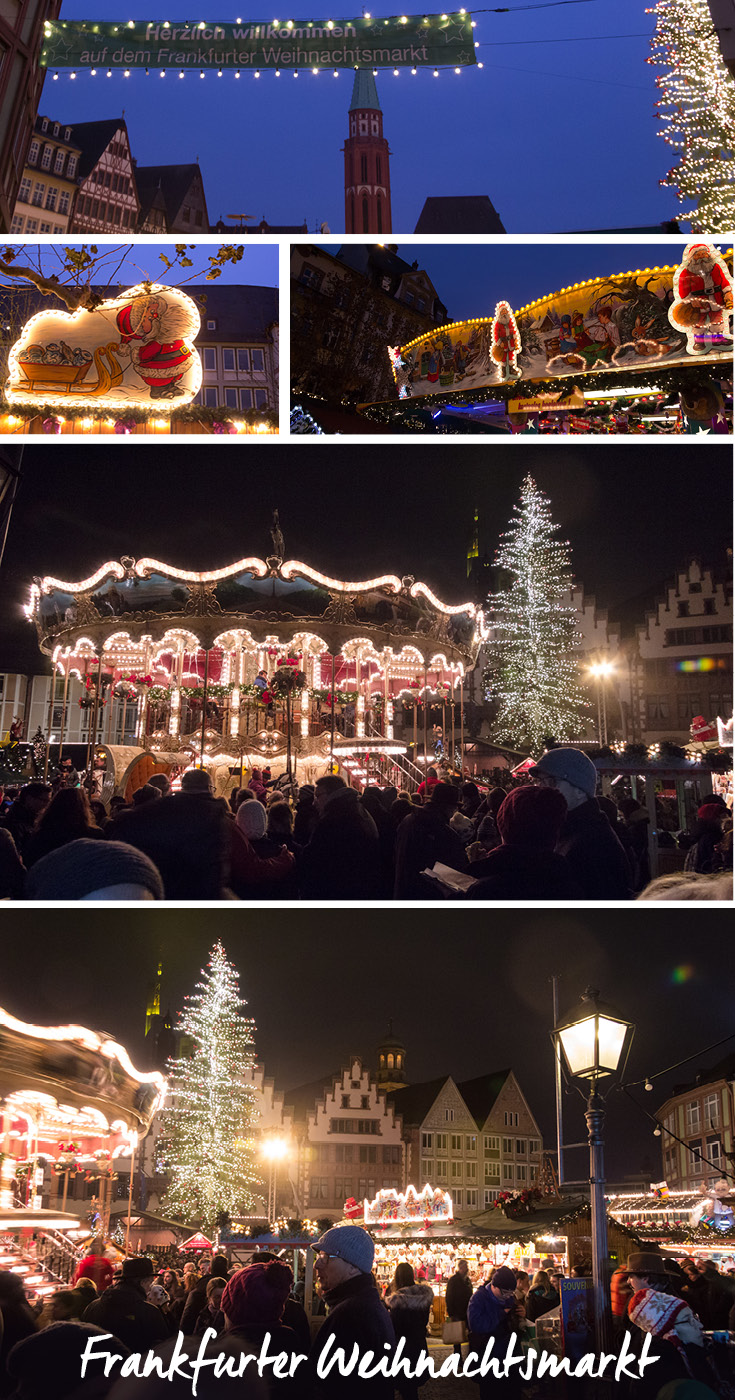
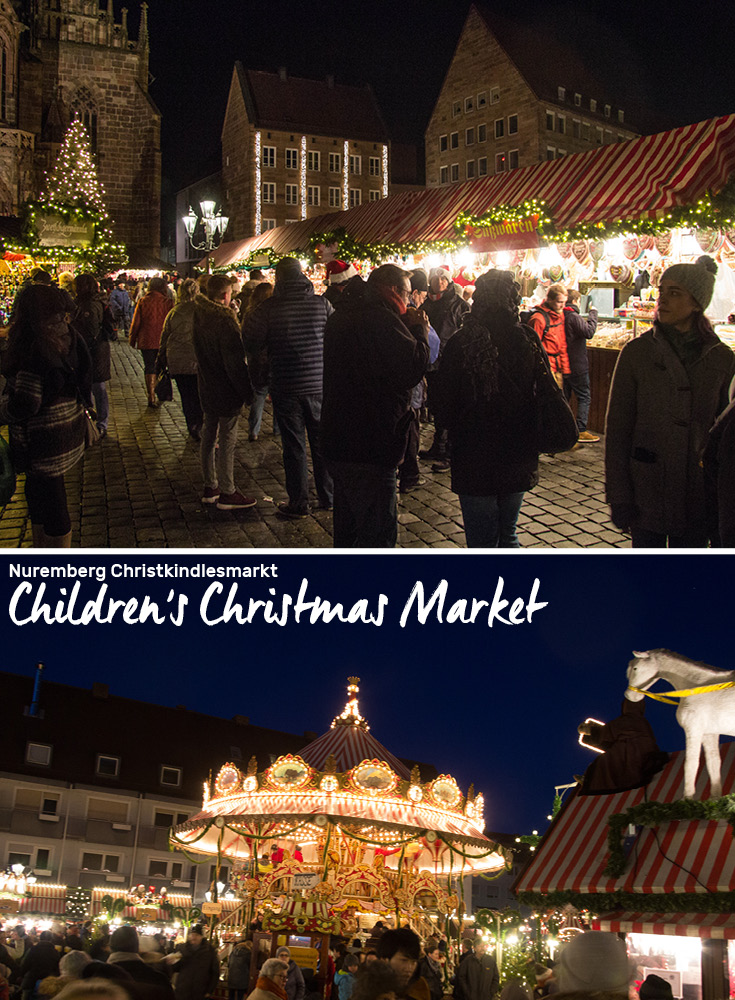
Star Attractions
Each Christmas market we visited offered exclusive events or experiences in order to distinguish themselves from other markets. Nuremberg has the Christkind legacy, a special childrens’ market, a global market, and strict standards on booth decorations in order to keep the market feeling traditional. Frankfurt am Main has coordinated ringing of the Church bells, a stunning decorated tree in front of the Römer, carolers singing from the rooftop of the church, and alternative smaller markets within the city’s market. Michelstädt’s and Hanau's star attraction is a larger than life Christmas pyramid while you stroll through the tiny cobblestone streets.
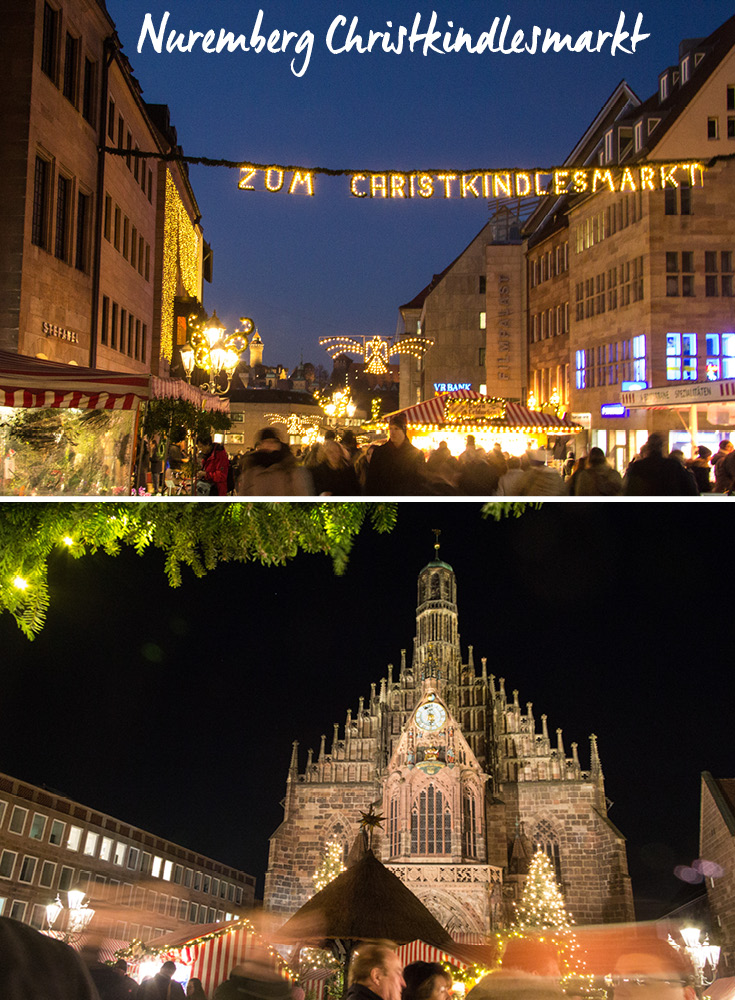
Craving Christmas Markets
I really fell in love with Germany's Christmas markets, and sorely miss them this year. I wonder why they haven't taken off in the United States? If you're looking for ways to bring German Christmas spirit home with you, read our earlier article here. Are you going to visit any German Christmas Markets this year? If you have any questions, we'd love to help! Leave a comment below or send us an email.
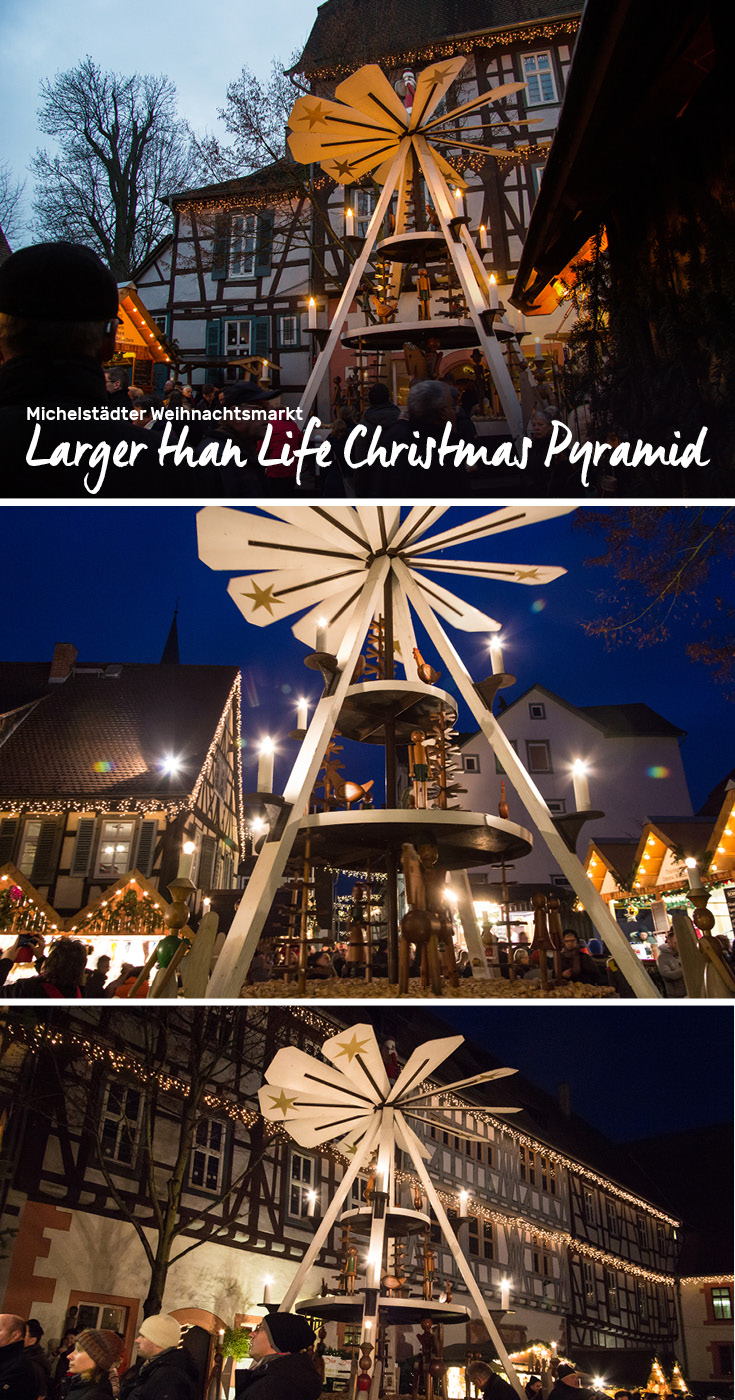
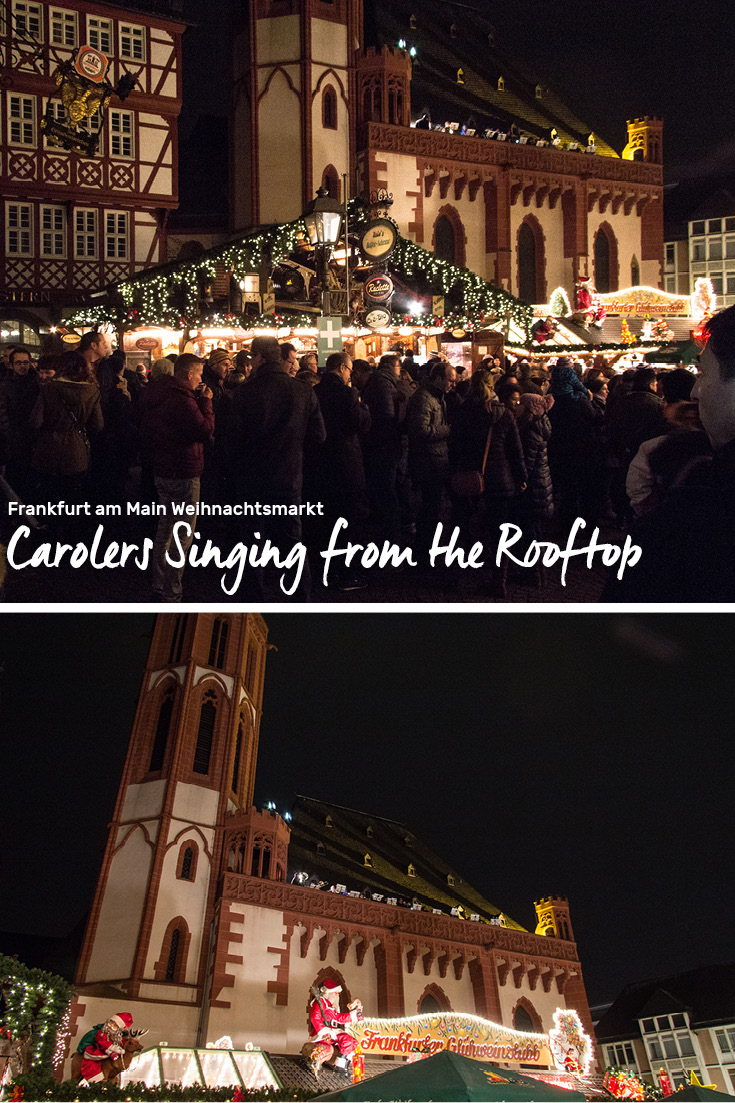
Follow Along
If you enjoyed this article, or these topics sound interesting to you, you'll love our weekly newsletter. You'll receive the newest posts each week and exclusive access to free planning resources like ‘Packing List & Tips for 2 Weeks in Germany’ and ‘Everything You Need to Rent a Car in Germany.
Thank you for reading!

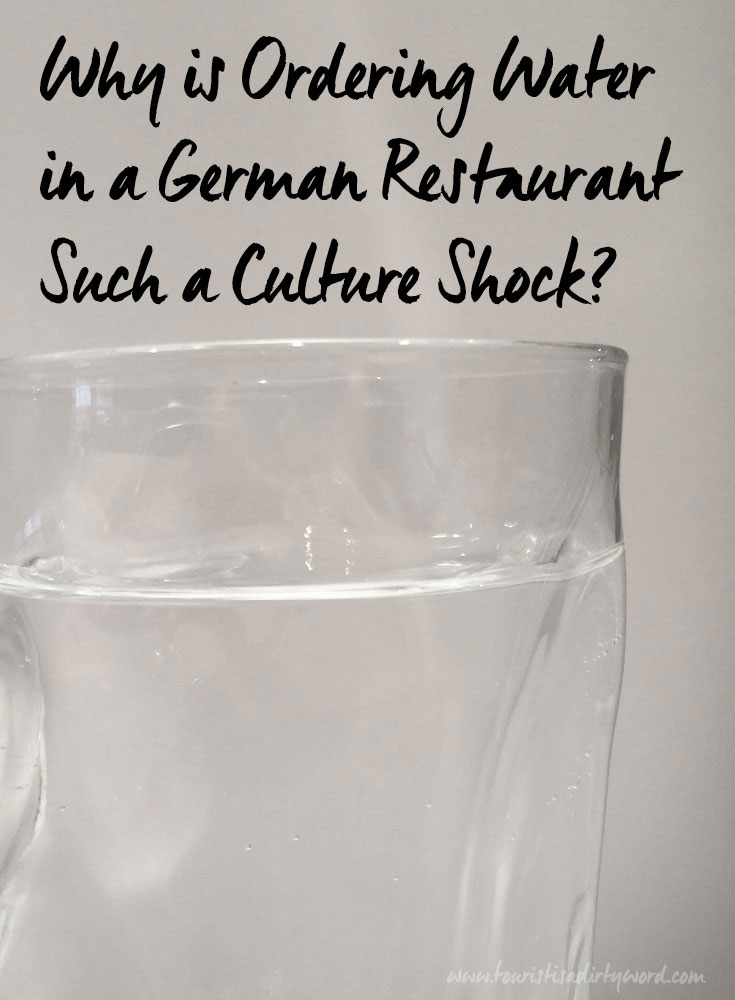
The waitress looked at me perplexed, and sputtered “I could add salt? That would take the bubbles away.”
My face scrunched up involuntarily. Wait, what? Salt? The bubbles may be gone, but then I’d be drinking salt water?! Sebastian intervened in German, and the waitress returned with a really fancy glass bottle of water. Great, I thought, I probably just added 3 Euros to the bill when I’d have been happy with water straight from the tap.
I quickly learned the hard way that ordering water in German restaurants would be complicated. In the U.S., you order water and without further instruction you’ll get a glass at least 1/4 full of ice, and then water either straight out of the tap, perhaps through a filter first, or not. Over the years I’ve learned different U.S. cities’ water tastes different. But, no matter the city, water is free, and it's the same water that comes out of the sink that you wash the dishes with, the same water that you shower in.
It's safe to say most Germans prefer water with some form of carbonation. If you order water, you’re going to be immediately questioned how much gas, or how bubbly would you like your water. I definitely suggest that you try it, but it is a very different water experience. No matter the amount of gas, I can’t bring myself to take more than a sip.
Why Is Tap Water Inconceivable in a German Restaurant?
This culture shock for Americans is a complicated tradition. I assure you that German tap water is perfectly, absolutely safe. We’re talking German engineering and plumbing here. It's safe, and likely better for you if you’re concerned how long the water has been sitting in plastic.
So, could it be the verbiage itself? In English, the word ‘tap’ is related to several other positive things such as beer and soda that is ‘on tap’. In German, the word for tap water is Leitungswasser, which literally means pipe water. I’m sorry, but I wouldn’t want that either. They need a better word!
But, it's maybe not all in a name. Restaurant owners bank on their guests ordering drinks where they can make a higher profit margin. When you order tap water, it appears as though you’re a horrible penny-pincher, and the restaurant will be lucky to break even with your order.
If You Feel the Same About Bubbly Water, Here’s What I Do
I’ve learned to be weary of even no-gas water, as often the added minerals tastes equally as bad to my very Americanized water palate. However, I’ve had good luck with the French bottled water brands Vittel and Volvic. We’ve gotten in the habit of ordering Vittel outright in restaurants, that way if they don’t have it the server will usually tell you what the alternatives are, giving the opportunity to switch to soda if you have to. Otherwise, if you order just still water you may end up with one of the mineral water brands that have the mineral taste. I tend to order more coffee and soda than I do in the States, surprisingly. Although it's not as healthy I feel more confident I know what I’m getting when I’m already exhausted and thirsty from walking all over the town.
While exploring cities, I pack my S’well water bottle in the morning, filled with refrigerated tap water. The bottle keeps water cold for 24 hours and I use my S’well bottle all year at home, too. In Florida I can leave the bottle in the car, where the temperatures get to be over a hundred degrees inside on a hot day, and when I get back, even while the exterior of the bottle is hot, the water is still refrigerator cold. It's magical! Before I discovered S’well, we were going through plastic bottles like crazy, and then carrying the empty ones around all day in order to get our pfand returned. Learn more about pfand in our earlier post here.
If you're interested, this is the S'well bottle I have, in the Supernova design. It changes colors depending on the lighting, (affiliate link):
Follow Along
If you enjoyed this article, or these topics sound interesting to you, you'll love our weekly newsletter. You'll receive a free Germany Packing list for signing up, and you'll receive each week's newest posts every Friday. Thank you for reading!

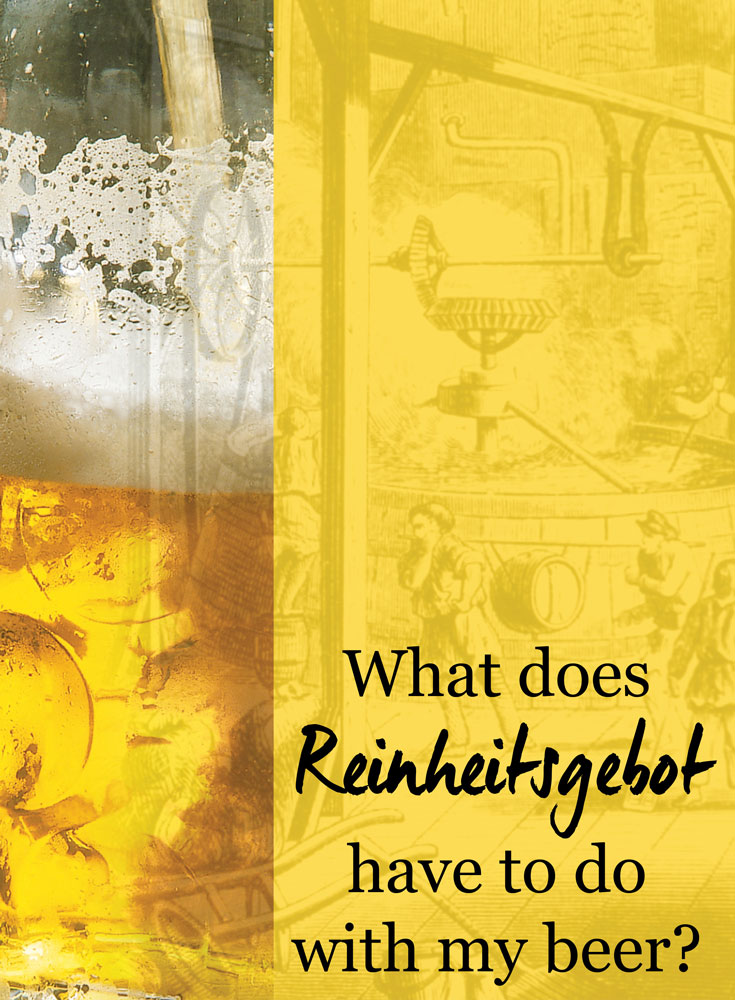
In the 16th century, one beer could be your last.
The Bavarian Duke William IX was justly concerned that beer was frequently contaminated with sawdust and even poisonous plants. He and his brother Duke Ludwig X enacted the famous decree now known as the Reinheitsgebot, the German Beer Purity Law, on April 23rd, 1516 in the Bavarian city of Ingolstadt. The law was introduced as a Landesverordnung (State Act) in Bavaria.
With a regulating purity law in place, citizens would be protected from low-quality and potentially lethal beer. Since water supplies were often polluted at the time, people preferred to drink beer as a safer alternative, thanks to its fermentation process. In honor of its 500 year anniversary this weekend, Denise and I wanted to bring you up to speed!
In 1918 it was called Reinheitsgebot (German Beer Purity Law) for the first time. The purity law requires that, “nothing other than barley, hops and water be used” to produce beer. Yeast was the fourth ingredient added to the purity law, but not until the 19th century when scientists discovered the fermenting agent. After the German unification in 1871, Bavaria demanded the introduction of the law all over the country. The Reinheitsgebot expanded to other parts of Germany in 1906.
How does U.S. beer fit into the law?
The German Beer Purity Law was an early food safety regulation, but there was no equal law ever created in the United States. While the U.S. Food and Drug Administration would never approve a brewer producing an unsafe product, they also do not forbid the use of non-traditional ingredients in beer. Today many American microbreweries and large beer companies experiment with different grains like rice or corn and infuse the beer with coffee beans, honey or different fruits. This progress showed that beer does not have to be a light-yellow, slightly bubbly, bitter-tasting beverage but that it can have a wide variety of flavors while still being a quality beer.
Beer Purity Today
German breweries today continue to use only the four natural ingredients mentioned in the Reinheitsgebot to create over 40 different types of beer, for example Alt beer in Westphalia and the city of Düsseldorf or Kölsch in the city of Cologne area. And while it is legal to import beers into Germany that are brewed with different grains and even treated with chemicals for a longer shelf life, most Germans still take pride in their ‘pure’ beer. And the large beer companies continue to use the slogan that their beer was brewed in accordance with the German Beer Purity Law from 1516 because it serves for a great marketing phrase.
Happy Anniversary Reinheitsgebot!
Have a beer this Saturday to celebrate and let us know in the comments, which German beer is your all-time favorite.
Follow Along
If you enjoyed this article, or these topics sound interesting to you, you'll love our weekly newsletter. You'll receive a free Germany Packing list for signing up, and you'll receive each week's newest posts every Friday. Thank you for reading!
Bonus Resources
• Video If you have 2 minutes and want to learn even more about the German Beer Purity Law, make sure to watch this video from Deutsche Welle TV:
• Listen to the podcast episode "One People, Many Sausages" that mentions the Reinheitsgebot, by BBC Radio 4, Germany: Memories of a Nation
• Read More on the homepage for the 500 year anniversary celebratory page Reinheitsgebot, maintained by the German Brewers Association. We also found the stock images necessary for our Title image collage thanks to them! The source images are shared on their flickr account Brauer-bund with a Creative Commons Attribution-NonCommercial license.
